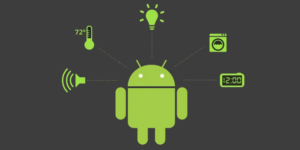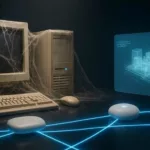Advanced technology has brought a lot of convenience to people, from smartphones to smart appliances. Home automation systems have been a huge hit especially with people who want to have easy access and control to their appliances. Automation systems are controlled through smart gadgets and can be installed with 12v actuators in order to obtain comfort and elegance. That is why selecting the best linear actuator is also important. Linear actuators are becoming more popular for automation and smartification. Actuators allow for a free range of motion depending on an application that an engineer or a home builder alike. The system can control the lighting, heating, ventilation, and even security locks inside the house. The appliances should be compatible with each other and are all connected to a centralized control unit. To even make things easier, mobile gadgets such as iPad, iPhone, tablets, and android phones can be used to control the smart appliances.
Using home automation systems gives a comfortable, convenient and safe lifestyle to families. By simply tapping your phone, you will be able to monitor everything that is happening around your house through the smart security gadgets like video cameras, smart locks, and smart doors. The use of automation systems increases energy efficiency while reducing the heating and cooling costs.
Making a Home Automation System with android is something that requires a lot of skill, patience, and resources. The project aims to allow the users control appliances wirelessly by integrating a specific system to the building’s electrical system.
Any mobile device with Bluetooth or WiFi can be used to control the system. The server will be a microcontroller powered box. There will be minimum costs for the installation and hardware since users already own mobile gadgets.
If you are planning a DIY smart home automation project, there are a couple of things that you have to know first. You must be knowledgeable with some basic carpentry, programming, and some basic electronics. Starting a DIY home automation project will also require some hardware which requires some technical materials. You can easily search the internet for electronic circuit board designs to design the set-up of your home system. Here are the things that you need to create and arrange so that you can finally have the home you deserve.
Block Diagram
A block diagram is a simple visual aid that shows the basic components of the home system that you are creating. It shows the centrality of control, the presence, and features of the home automation system and the major electronic components and devices that will be installed. Here is the block diagram of a home automation system.
The Circuit Diagram
The Circuit diagram is a more complex diagram which will show the circuitry of all the electronic components that has to be set-up. To make a circuit diagram, you need technical knowledge with electronic components and how to handle and put them together. If you are in doubt with your Circuitry skills, you can simply try and learn from the internet.
PCB for The Project
A PCB or a plastic circuit board is a specially designed electronic diagram. It physically connects the different parts and components of the system. You might need the skills for arranging and soldering parts together. The circuit board must be made precisely to prevent short circuiting.
Programming, Software, and Coding
The automation system is managed with small computers. One brand is the Arduino, which is popular due to its easy interface and coding flexibility. Many home automation enthusiast choose Arduino as it is compatible to any appliance and can easily be programmed with Android devices. Android’s software is easily one of the most popular since it uses complex codes that can be programmed with anything.
The Android Application
The final element that is needed in a home automation project is, of course, the Android App. This Application offers the centrality of control of your home automation system. The application’s interface depends on the appliances, sensors, and actuators that you install with your home automation system. The app can regulate temperature, automatically switch lights on and off, analyze the user’s preferences and track sleep patterns.
Making a DIY Home Automation system is hard work but it is also worth it. The process can be enlightening in many ways but most importantly, you are bringing comfort, elegance, and ambiance to your house. You are turning the physical spaces and materials of your house into a cozy home.








